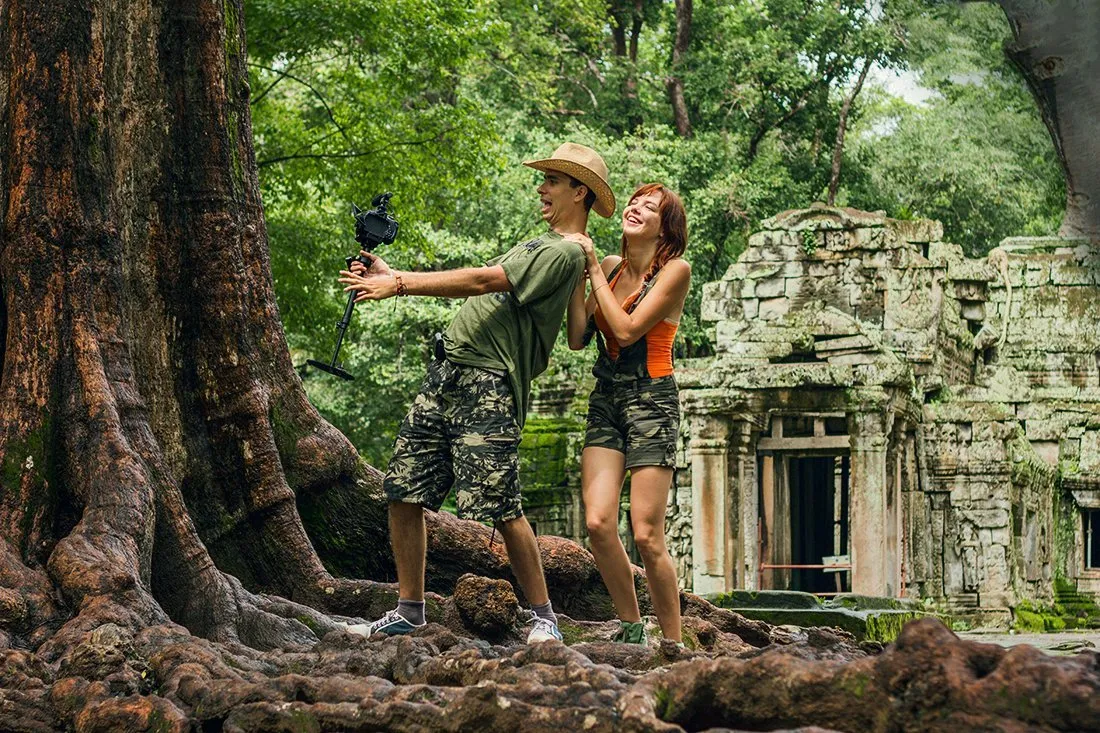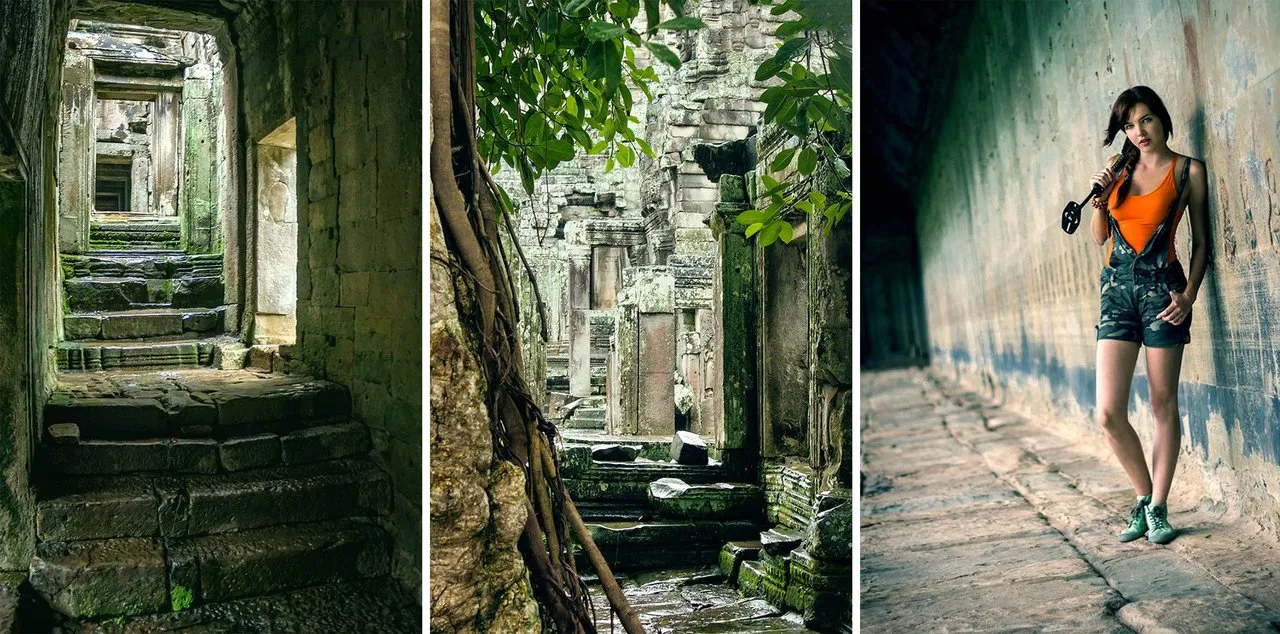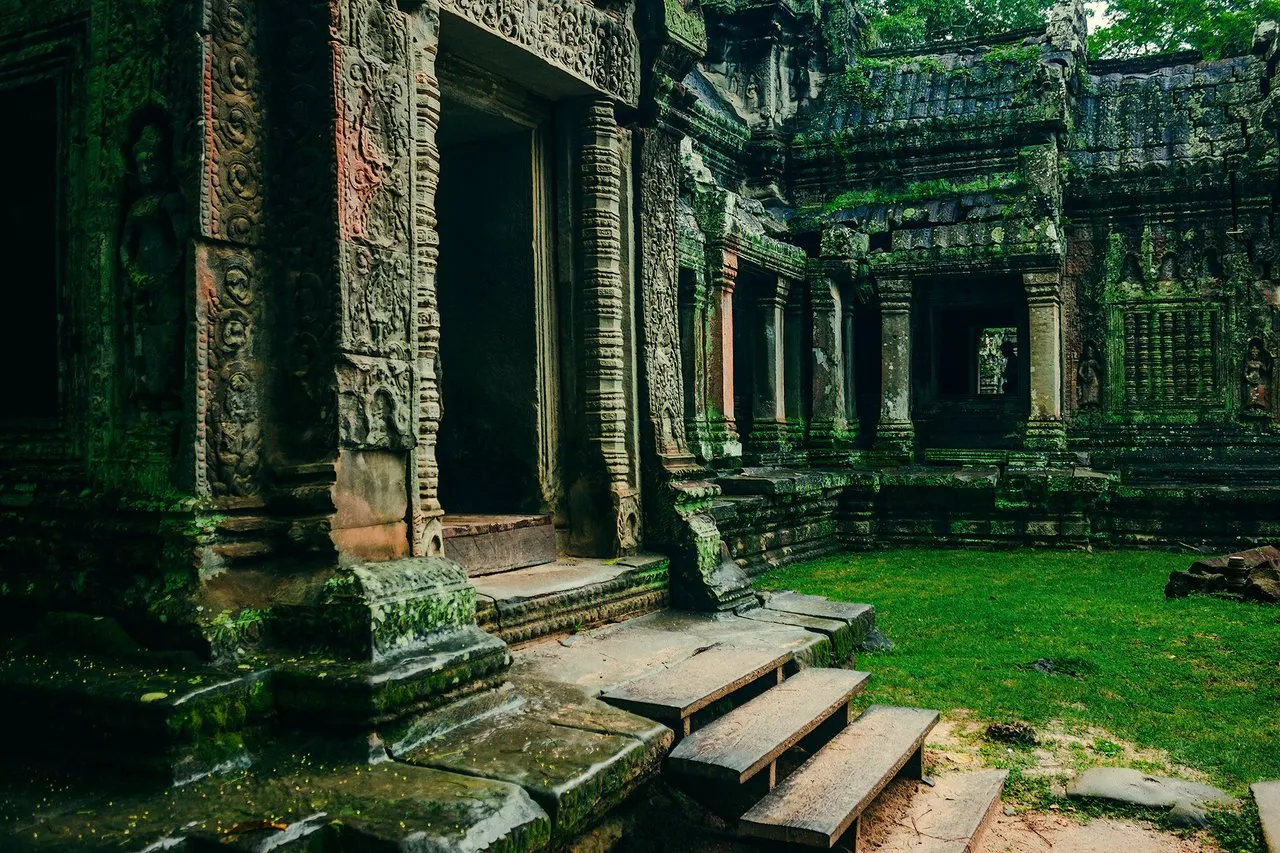Visiting Angkor temples was the most astounding and overwhelming experience I had during my travels. History, architecture, carvings, stories and views – it's all amazing. I was there in September, together with my man, of course. Look at us, hiding from rain in one of the temples.

But Angkor is not just a temple site, it’s an entire lost city, wrapped in jungle. It was the capital city of the Khmer Empire and the largest pre-industrial city in the world, with an elaborate infrastructure system connecting an urban sprawl of at least 1,000 square kilometres to the well-known temples at its core. Newly identified agricultural systems in the Angkor area may have supported up to one million people.

Angkor has experienced consistent conservation efforts since the 1990s (and inconsistent conservation since 1860 – the year when it was discovered by the French). A number of countries such as France, Japan and China are currently involved in various Angkor Wat conservation projects. and they’ve literally collected all the rubble, taken apart remains of the temples, and rebuilt them like giant puzzles.

The temples of the Angkor area number over one thousand, ranging in scale from nondescript piles of brick rubble scattered through rice fields to the Angkor Wat, said to be the world's largest single religious monument.

The number of visitors multiplies each year, but there are still ways to enjoy the temples as they must have appeared when first discovered, and escape the crowds. There are many ways to do that - just by arriving at a different time of day, or approaching from a different direction.

We had a lot of fun there, posing in front of our camera on a tripod when it wasn't raining. I think September is the lowest season and the best time to visit if you're ok with getting a bit wet (or getting really wet if you forget to bring raincoats).

I was pretending to be Lara Croft in Tomb Raider movie – but with a steadicam instead of weapon. 😉

We didn't hire a guide – walking around by ourselves and trying to imagine what this place looked like before seemed more interesting. I have read quite a lot of information about it though.

Just about every surface is decorated with carved bas-relief scenes of wars, everyday life, and Hindu legends. It has more than 3000 beguiling apsaras (heavenly nymphs) carved into its walls. Each of them is unique.
The sandstone blocks from which Angkor Wat was built were quarried from the holy mountain of Phnom Kulen, more than 50km away, and floated down the Siem Reap River on rafts. The logistics of such an operation are mind blowing, consuming the labour of thousands. According to inscriptions, the construction of Angkor Wat involved 300,000 workers and 6000 elephants.

The surviving stone structures seen today are only a part of what used to exist at Angkor. There was also an enormous, thriving city of wooden houses, markets, shops, palaces, and public buildings. Unfortunately, the city has long since disappeared through the ravages of time and war.

The power and vitality of the kingdom gradually waned until finally, after the armies of Ayutthaya captured and sacked Angkor in 1431, the city was partially abandoned.

Now it is one of the most important archaeological sites in South-East Asia and one of the world's most awe-inspiring and breathtaking architectural accomplishments of all time.

Ok, how much does it cost?
Starting from 2017 the price to visit Angkor is $37 for 1 Day, $62 for 3 Days, and $72 for 7 Days. When we visited to Angkor it was just $40 for 3 Days. I wonder if they made the prices higher because there's too many tourists now... Also now you have to make sure that your shoulders and knees are covered to get the pass! Don't dress like me on those photos! 😝
Personally I think 3 days is the best amount of days to spend in Angkor. There will be enough time to explore the main temples, some of the minor sites, and have some time to explore a few temple sites in depth.

As for other prices, it costs about $15 to hire a tuk-tuk (two-wheeled carriage pulled behind a moto ) for a day to visit the temples. And we rented a cheap room for $10 per day which we shared with some ants. But we didn't spend a lot of time in the room – we were exploring Angkor!

All pictures are taken by me and my Canon 550d 😊
Stay tuned for more!
